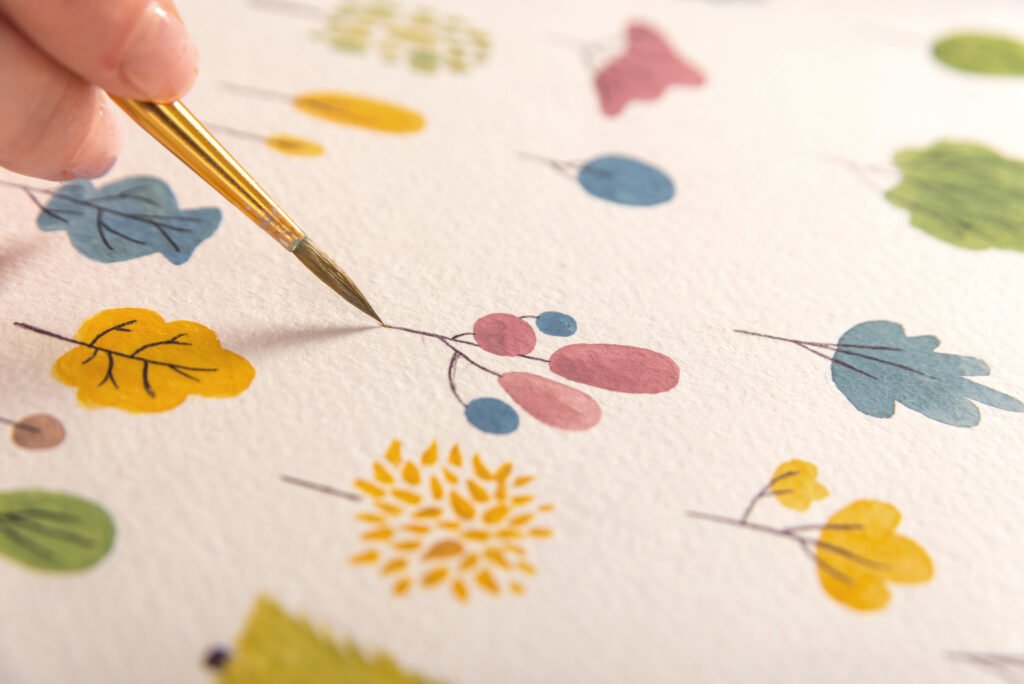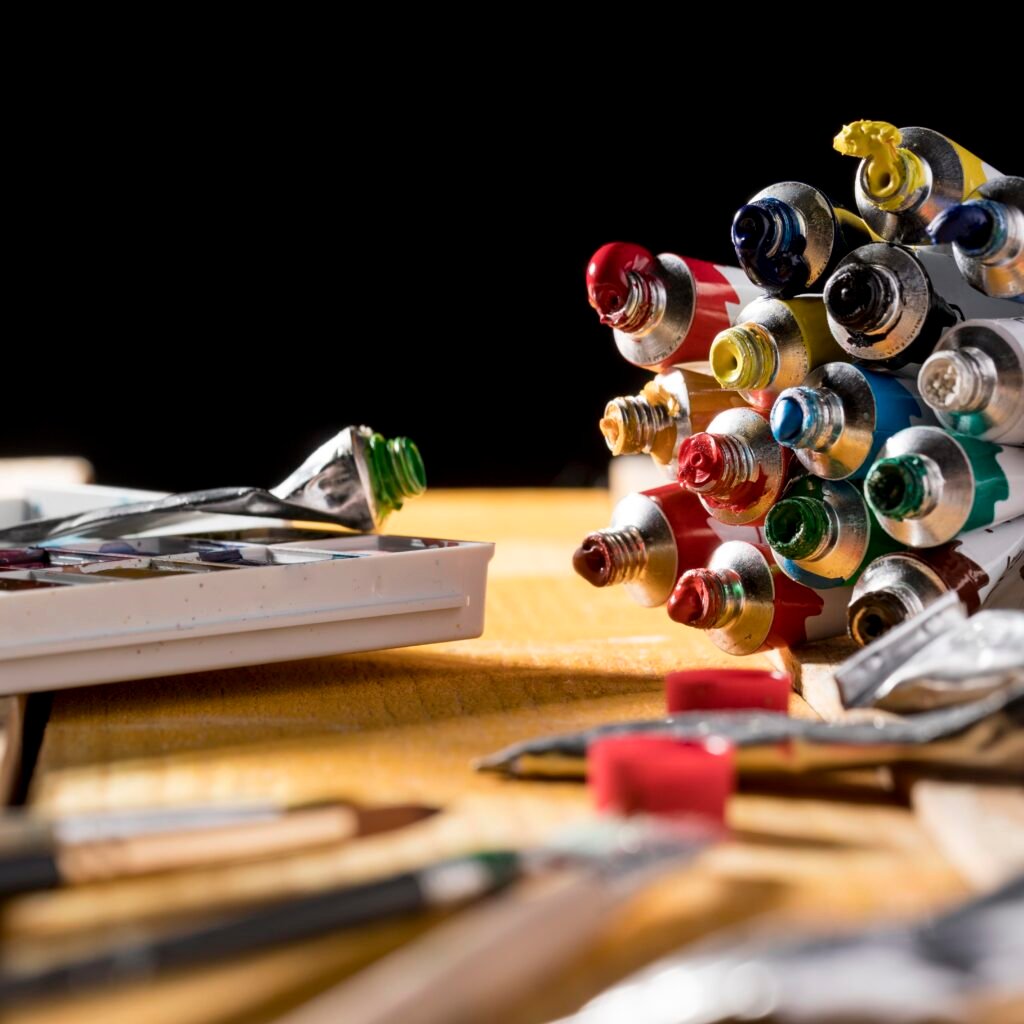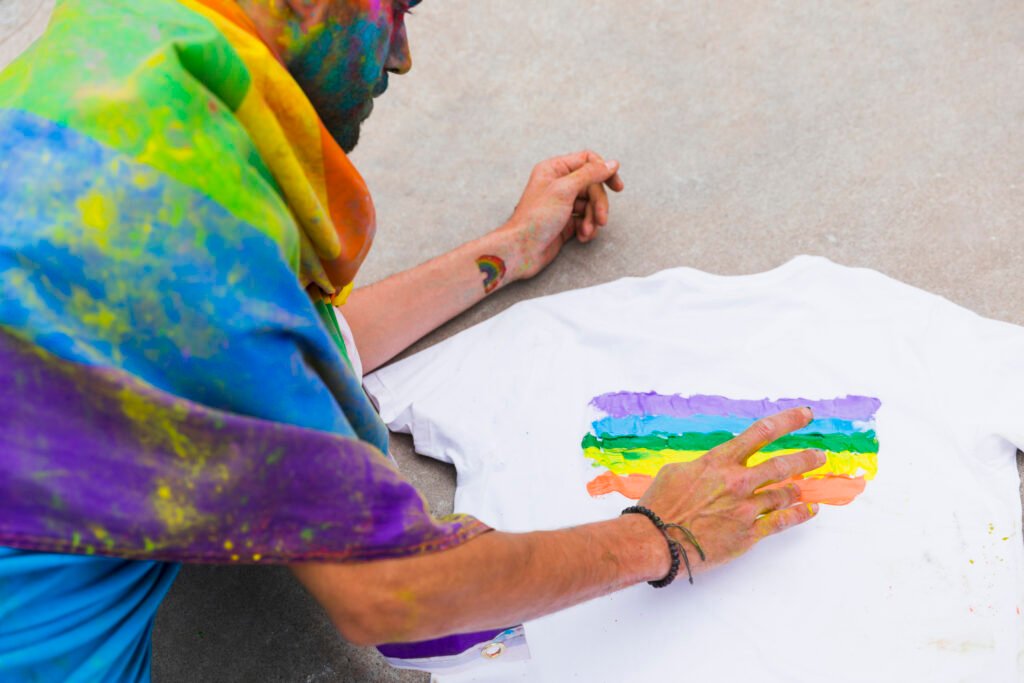Fabric Paint

In the realm of artistic expression, fabric paint stands as a vibrant medium, transforming ordinary fabrics into personalized masterpieces. This versatile paint opens up a realm of possibilities for creative minds, allowing individuals to breathe life into clothing, accessories, and home décor items. From custom-designed garments to DIY projects, fabric paint offers an accessible and dynamic means of self-expression.
1. The Evolution of Fabric Paint:
- Fabric painting has a rich history, dating back centuries when artisans used natural dyes and pigments to adorn textiles.
- Modern fabric paint, however, is a product of advancements in chemical formulations, providing artists with a spectrum of colours, textures, and finishes
2. Types of Fabric Paint:
- Acrylic Fabric Paint: Versatile and widely used, acrylic fabric paint offers a durable finish and vibrant colors. It adheres to various fabrics and can be mixed to create custom shades.
- Fabric Spray Paint: Convenient for achieving even coverage on larger surfaces, fabric spray paint comes in aerosol cans. It is popular for creating gradients and intricate designs.
- Fabric Markers: Combining the precision of markers with fabric paint, fabric markers allow for detailed and controlled application. They are ideal for outlining and adding intricate patterns.
- Puff Paint: Known for its raised, three-dimensional effect, puff paint adds texture to the fabric. It is often used for creating tactile designs on clothing and accessories.

3. Choosing the Right Fabric Paint:
- fore diving into a project, it’s crucial to select the appropriate fabric paint based on the fabric type and desired outcome.
- Acrylic fabric paint is suitable for cotton, denim, and other natural fibers, while fabric spray paint is versatile for various fabrics.
- Testing the paint on a small, inconspicuous area of the fabric ensures compatibility and helps determine the final look.
4. Preparing the Surface:
- Properly preparing the fabric is key to achieving a successful outcome. Pre-wash and iron the fabric to remove any sizing or wrinkles.
- Stretch the fabric over a flat surface, securing it tightly to prevent uneven application and distortion.
5. Techniques for Application:
- Brush Painting: Utilizing brushes provides control over strokes and details. It is suitable for intricate designs and blending colors on fabric.
- Stenciling: Stencils offer a precise way to create repeated patterns or shapes. They can be positioned strategically for a cohesive design.
- Block Printing: Using blocks or stamps dipped in fabric paint allows for the creation of repeating patterns. This technique adds a handcrafted touch to textiles.
- Spray Painting: Fabric spray paint is ideal for achieving an even coat over large areas. It’s commonly used for creating gradients, ombre effects, and abstract designs.

6. Setting and Curing:
- Once the artwork is complete, setting the fabric paint is crucial for durability. Follow the manufacturer’s instructions for heat setting or curing the paint.
- Heat setting is often done with an iron, which helps the paint bond with the fabric fibers. Some paints may require curing through air-drying or heat application in a dryer.
7. Care and Maintenance:
- Proper care ensures the longevity of fabric-painted items. Follow care instructions provided by the paint manufacturer.
- Generally, hand washing or using the delicate cycle with cold water helps preserve the vibrancy of the colors. Avoid harsh detergents and bleach.
8. Applications of Fabric Paint:
- Custom Apparel: Fabric paint allows individuals to transform plain garments into personalized fashion statements. T-shirts, jeans, and sneakers become canvases for self-expression.
- Home Décor: From accent pillows to canvas wall art, fabric paint rejuvenates home décor items. It’s a cost-effective way to refresh the look of living spaces.
- Accessories: Hats, bags, and scarves become unique accessories when adorned with fabric paint. This DIY approach adds character to everyday items.
9. Art Therapy and Education:
- Fabric painting serves as a therapeutic and educational tool. It provides an outlet for self-expression, creativity, and stress relief.
- Educational institutions often incorporate fabric painting into art curriculums, encouraging students to explore their artistic abilities.
10. Community Engagement and Events:
- Fabric painting has become a popular activity at community events, workshops, and team-building exercises. It fosters creativity and strengthens social bonds.
- Events like fabric-painting parties provide an interactive and enjoyable platform for individuals to showcase their artistic flair.
Conclusion: Fabric paint is a dynamic medium that transcends traditional boundaries, inviting individuals of all ages and skill levels to explore their creative instincts. Whether transforming clothing into wearable art, revitalizing home décor, or engaging in therapeutic expression, fabric paint empowers people to infuse their surroundings with color and originality. As this versatile art form continues to evolve, the possibilities for self-expression through fabric painting are limited only by the bounds of imagination,
feel free for contact us.
